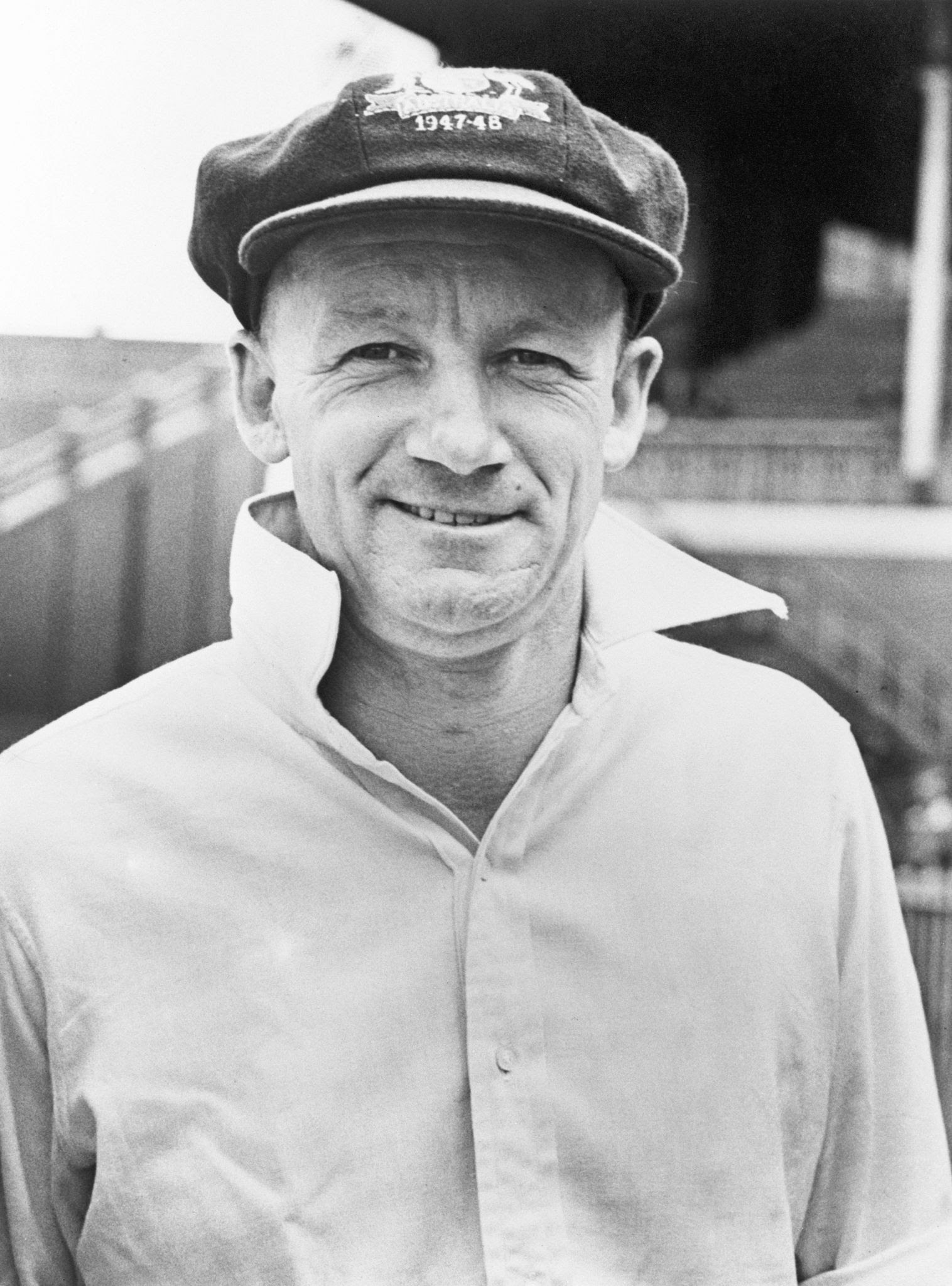Donald Bradman, known as “The Don,” is widely regarded as the greatest batsman in cricket history. The Australian icon earned recognition as one of the most dominant athletes across all sports due to his phenomenal batting achievements.
Bradman’s staggering career Test batting average of 99.94 has never been surpassed. His supreme consistency and strokeplay allowed him to shatter batting records during the 1930s and 1940s. Bradman scored over 6,000 runs at home and away against formidable English and Indian attacks.
Knighted for his services to cricket in 1949, Bradman combined unmatched batting prowess with shrewd leadership as Australia’s captain.
His batting statistics and uncompromising style left an indelible mark on cricket’s evolution. Six decades after retirement, Bradman’s name remains synonymous with the pinnacle of sports excellence.
Early Life and Entry into Cricket: The Humble Beginnings of a Cricketing Genius
Born on August 27, 1908, in Cootamundra, New South Wales, Bradman grew up in Bowral, where his cricketing talent quickly became apparent.
His boyhood practice of hitting a golf ball against a water tank with a cricket stump honed the skills that would one day astonish the cricketing world.
Cricket Career and World Records: The Meteoric Rise of Bradman in International Cricket

Bradman’s career was marked by a series of record-breaking performances, which began in earnest when he played for New South Wales at the age of 19.
His Test debut for Australia came against England in the 1928–29 series, and it wasn’t long before he established himself as a formidable force in the sport.
Unparalleled Achievements and the Quest for Perfection
Bradman’s statistics speak volumes, with an unmatched Test batting average of 99.94. This figure, often cited as the greatest achievement by any sportsman in any major sport, underlines his dominance during the inter-war period.
The Bodyline Series: Controversy and Resilience Against the Odds
The Bodyline series, or the 1932–33 Ashes tour of Australia, saw Bradman pitted against a hostile English bowling tactic designed specifically to curb his scoring.
Despite this, he still averaged 56.57 in the series, showcasing his exceptional skill and mental fortitude.
Impact on Australian and World Cricket: The Don’s Role in Elevating the Sport
Bradman’s influence extended beyond his batting average; he played a significant role in popularizing cricket in Australia during the economic depressions of the 1930s. His performances brought joy and hope to a nation struggling with hardship.
Post-Playing Career and Knighthood: Contributions to Cricket After Retirement
After retiring from playing, Bradman remained a central figure in cricket administration and writing. He was knighted in 1949 for his services to cricket, becoming the only Australian cricketer ever to receive a knighthood while still an active player.
Legacy and Remembrance: The Enduring Legacy of a Cricketing Legend
Bradman’s passing on February 25, 2001, was mourned worldwide, but his legacy endures. He is remembered not only for his extraordinary cricketing feats but also for his sportsmanship, humility, and the indelible impact he left on the sport.
Memorials and Tributes to Sir Donald Bradman

Numerous awards, a museum, and memorials continue to honor his memory, ensuring that the legend of Sir Donald Bradman will inspire future generations for years to come.
Sir Donald Bradman’s story is one of remarkable talent, unwavering determination, and a deep love for cricket. His name is etched in history, not just as a record-setting batsman, but as an individual who embodied the spirit of the game.
As cricket evolves, the tale of The Don remains a constant source of inspiration, reminding us of the heights human ability can reach when coupled with dedication and passion.
Frequently Asked Questions (FAQs) About Sir Donald Bradman
Why did Don Bradman retire?
Don Bradman retired from Test cricket in 1948 after the series against England, which is famously known as “The Invincibles” tour, where his Australian team went undefeated throughout the tour. His retirement was due to a combination of advancing age (he was nearly 40), ongoing health issues, and a desire to spend more time with his family and on business interests. After such a stellar career, it was a natural point for Bradman to step away from the game, having solidified his legacy as one of the greatest cricketers of all time.
Did Bradman ever hit a six?
In Test cricket, Don Bradman hit just six sixes in his entire career. Bradman’s game was characterized by his ability to score runs all around the wicket through precise shot placement and quick running rather than power-hitting. His approach was ideally suited to the playing conditions and equipment of his era, which favored ground strokes over aerial shots.
Is Sachin better than Bradman?
Comparing Sachin Tendulkar and Don Bradman involves different eras, conditions, and types of the game. Bradman’s Test batting average of 99.94 is unparalleled, and he dominated his era like no other cricketer.
Sachin Tendulkar, on the other hand, is one of the game’s most prolific run-scorers, with a career that spanned 24 years and saw him break numerous records in both Test and One-Day International cricket. Sachin adapted to all forms of the game, faced a greater variety of international bowlers, and played under different pressures, including the intense scrutiny of modern media.
The question of who is better is often a matter of personal opinion, and many cricket enthusiasts would defer from comparing them directly, choosing instead to appreciate each player’s unique contributions to the sport.
Why is Don Bradman so famous?
Don Bradman is so famous because of his extraordinary statistical achievements and the context in which he played. His Test batting average of 99.94 is a record that is still unbroken and is often cited as one of the greatest achievements in any major sport.
Bradman’s dominance in cricket was such that it prompted the England team to develop the controversial “Bodyline” bowling tactic specifically to combat his skill.
His fame is also due to the way he played the game, with a level of consistency and excellence that set him apart from his contemporaries and made him a hero during difficult times for Australia, including the Great Depression and the post-war period. His status is not just as a sporting legend but also as a cultural icon of his time.










